How Does a Comparative Study Look Like for Ib Visual Arts
Do yous find yourself analysing the words on a visual text more than than the image itself? Don't worry! In this post, we will ensure that you know how to analyse images and bring your English to the adjacent level!
What is in this article?
- Why study images or representations of data?
- Types of images you lot will analyse
- Features unique to visual texts
- How to analyse visual texts footstep-by-step
Why written report images or representation of information?
Before we were writing epic poetry, humans were communicating with images. Cave paintings in France, Republic of indonesia, and Australia engagement dorsum over 30,000 years.
Humans reply and sympathize visual information readily. This is why we have so many logos or recognisable symbols in our day to day lives.
This is also why you will probable have to analyse images in the HSC.
In High School English, you will be expected to know how to analyse a range of visual images – paintings, comics, cartoons, graphic arts, photographs – in reading tasks.
Why is visual information of import?
We live in a visual-oriented globe. This means that we rely on our sight more than whatever other senses.
According to Social Science Research Network, more than 65% of humans are visual learners. This ways that people can recognise and retain visual information more than any other source.
From a immature age, we recognise symbols and visual aids and associate it with meaning.
For instance, crimson lights mean stop, and green lights mean go.
It is our way of communicating with others.
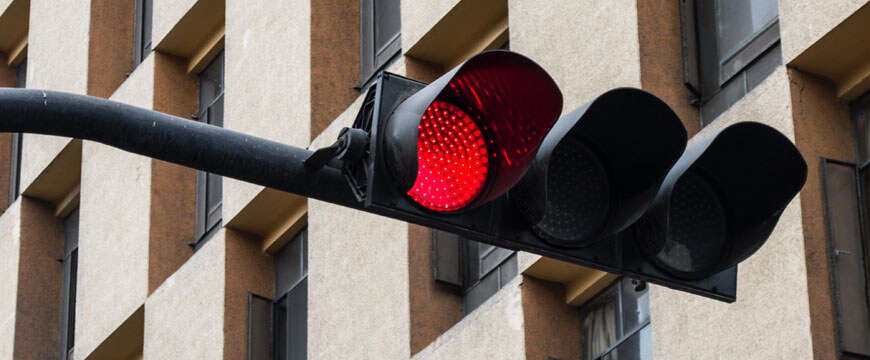
The importance of visual literacy
Visual literacy is the ability to empathise meaning and communicate using visual images, non words.
Visual literacy allows united states to interpret and critically search for meaning using only visual aids.
Also, visual literacy can help us make pregnant out of words. When we read difficult texts, we are always told to "imagine it play out in your head". This is because visual information assist us understand things better.
Are charts and graphs texts?
Yeah! Don't neglect analysing charts and graphs: the Stage 4 English language Syllabus requires you to study them too!
Interpret and evaluate the effectiveness of information and ideas conveyed in diagrammatic representation, eg. charts, graphs, timelines and surveys.
Charts and graphs are considered equally texts because they present information in a specific way to represent and communicate meaning. Oftentimes, it is very straight forward.
We will go through how to analyse these texts farther in the article.
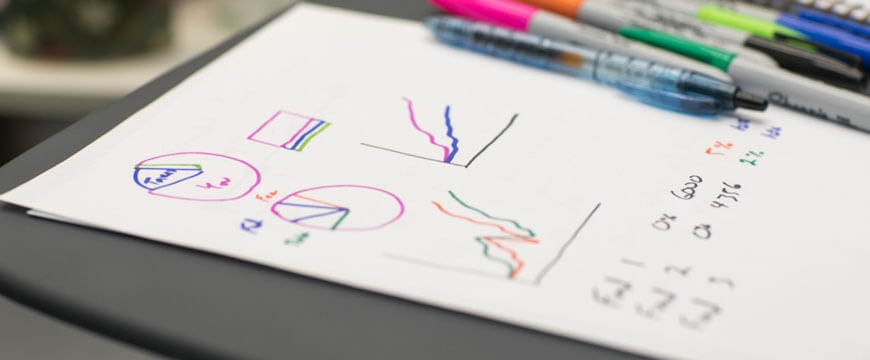
Thinking about art
Recollect, artworks are also considered every bit visual texts because they convey meaning through the way they nowadays their information.
This includes paintings, photographs, sculptures, installation etc.
When we analyse art, we tin't only expect for the literal meaning of what you see. Unlike charts and graphs, art is more abstruse.
You demand to critically recollect and search for hidden meanings. Recognise visual hints and figure out what they represent.
Sharpen your analysing skills in 2-days!
In our Year 9 English Course, we go through essential English language skills and help you practise and gain conviction in using them.
The types of images you volition analyse
In High School English language, you lot will come up across unlike types of visual texts that yous need to know how to analyse:
Let'due south see what they are:
Pictures, photographs and paintings (inc. collages)
Pictures, photographs, paintings and collages are some of the well-nigh common visual texts that you volition come across.
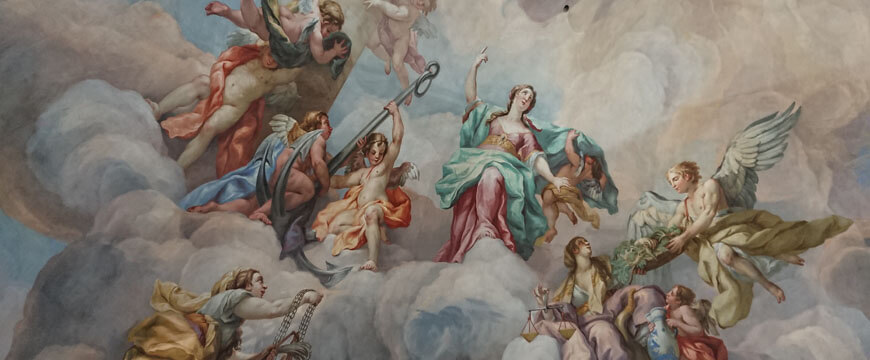
When you analyse these types of images, you need to take context into consideration.
This is considering visual texts are all about abstract meaning. So, it is important that you know the composer's context to really know what they are trying to say.
These are some techniques that you demand to consider:
- Gaze
- Framing
- Shapes
- Color
- Composition
- Texture
- AND MORE.
Obviously, you should be looking at visual techniques.
Nonetheless, one of the chief techniques you need to use is SYMBOLISM.
You should ever relate visual techniques to meaning. Figure out what the subject field represents. Link it back to the composer'due south purpose.
Sculptures
Sculptures are three-dimensional artworks. They are unremarkably made of clay, marble or wood. However, they tin also be part of larger installations.
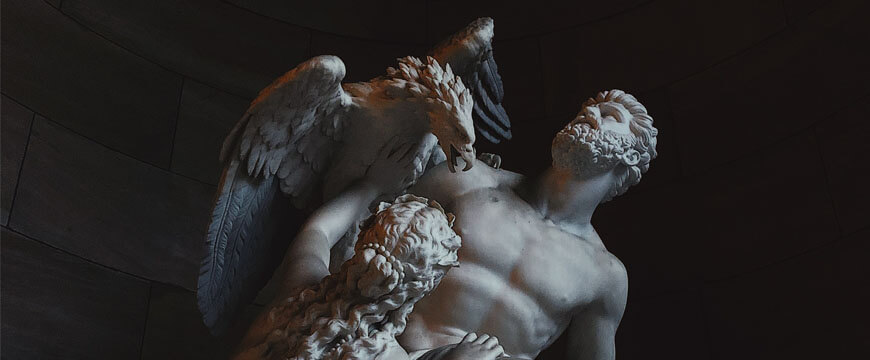
When you analyse sculptures think about:
- Shapes
- Size
- Texture
- Color
Recollect, they are iii-dimensional. This means that audiences will have a more intimate and direct connection with the sculpture.
Go on this in mind when you are trying to figure out the composer's purpose and link your analysis to this finding.
Multimedia texts
Multimedia texts employ a combination of different forms like text, images, video, blitheness and/or sound to present their data in a new way.
When you lot analyse these texts, you demand to look at different visual techniques that are specific to the forms used.
For case,House of Leaves past Mark Z. Danielewski is a bricolage literature text.
This means that information technology presents the story in a very unconventional manner.
Some sentences create square shapes. Some pages are empty, whilst others are crowded with words overlapping each other. Sometimes, you demand to flip the book upside downwardly to read it.
The way the words are visually presented in this multimodal text, reflect what is going on in the story.
Take a look at how it challenges textual conventions.
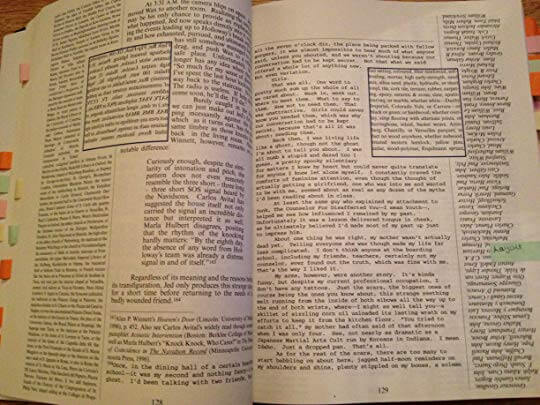
House of leaves breaks many structural conventions to immerse readers.
As you meet, multimodal texts tin can be visually presented in various means. You need to figure out why the composer chose that particular technique and analyse information technology.
Graphic novels and picture books
Graphic novels are comics that are commonly ofnovel length. Pic books are books where the narrative is told mainly through images, with a few or no words at all.
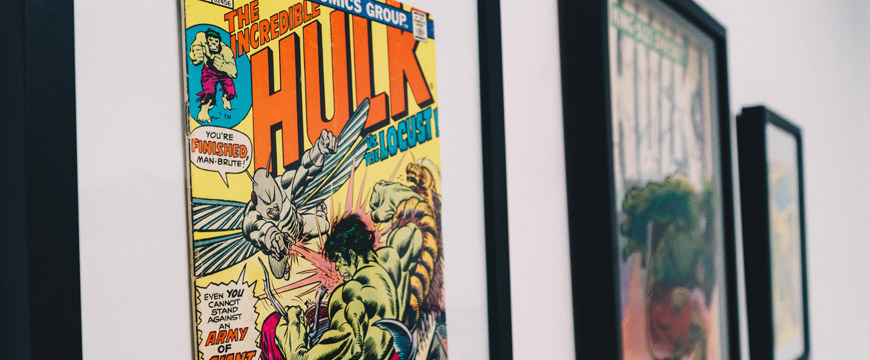
Motion-picture show books and graphic novels use visual techniques to convey meaning. Click here to see the Table.
Nevertheless, graphic novels likewise take their own set of unique techiques:
- Emanata: Any lines, squiggles, shapes or icons that come from a comic graphic symbol or object. Can be teardrops, motion lines, question marks etc.
- Graphic weight: Apply of low-cal and dark space or shading to create a dissimilarity.
- Gutter: Blank infinite between panels.
- Panel: An image that is framed.
- Splash: A panel that takes up 2 whole pages.
- Oral communication bubbles: A frame around dialogue to bear witness that a grapheme is speaking.
- Voice-over: The narrator'due south dialogue to the audition. It is usually framed in a square, on the top or bottom of the panel.
When you analyse a graphic novel or moving-picture show book, make certain you use techniques that are unique to their grade.
E'er call up critically. Inquire yourself why certain visual aids are used and what it represents. Always dig deeper for meaning.
Graphs, charts, infographics
Graphs, charts and infographics stand for their information in a literal manner. They usually nowadays statistics, data or some sort of scientific information.

As yous see in the above image, charts and graphs portray information in a very direct style. Each color represents something dissimilar. At that place are percentages and numbers.
Everything is very literal. However, that DOESN'T hateful that there is no interpretation.
You lot need to interpret the key, effigy out what the data represents, identify the percentage of unlike categories etc.
You may even be asked to infer information from the data. Eg. There is a tendency of lung cancer in smokers.
Just because graphs, charts and infographics give you statistics and data, that doesn't hateful that the work is washed for you.
Features unique to visual texts
When you analyse visual texts, it is important that y'all aren't merely analsying the words on the image.
This means that y'all need to look at the techniques that are UNIQUE to visual texts.
Here is a listing of techniques:
Technique | Details | Example |
| Close-up shot | When the camera is positioned very close to the subject. It makes a more intimate feel. | 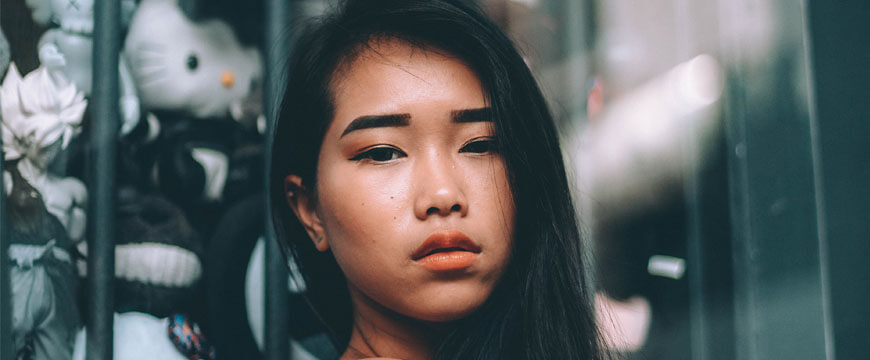 |
| Colours/Hue/Tone: | Recollect almost the colour choices and what they stand for. | 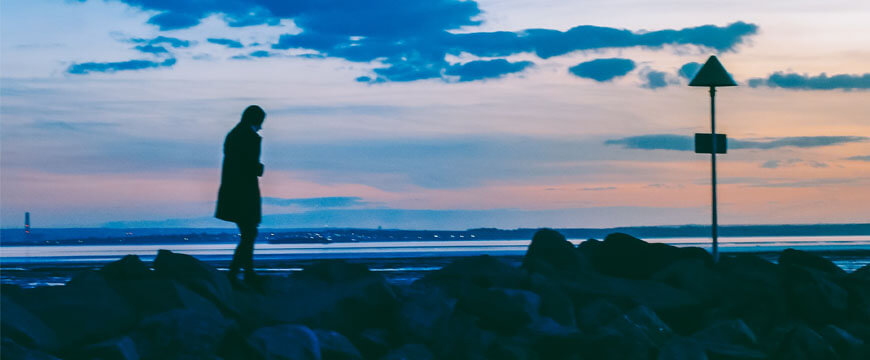 Absurd colours = sad or sombre |
| Composition | Observe where sure things are place and how it helps convey the message. Think well-nigh objects, surroundings, and even what is omitted. | 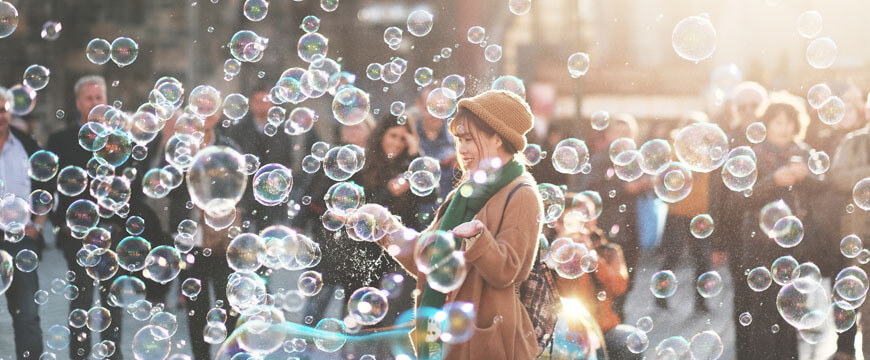 The bubbles make the limerick crowded. |
| Contrast | How oppositional or different elements are placed together to create disharmonize, interest, drama etc. | 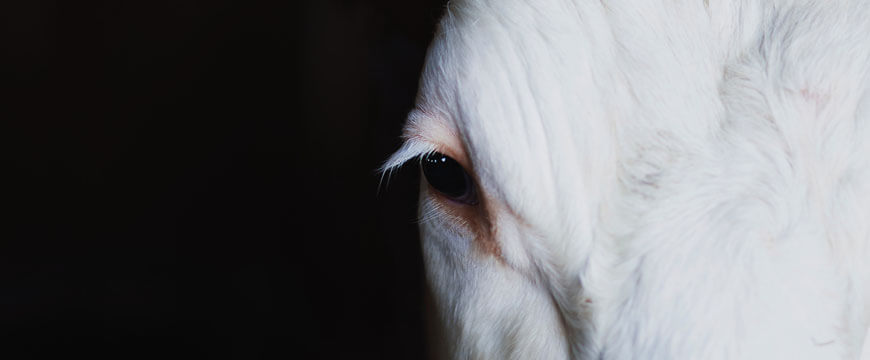 |
| Extreme shut-up shot | Camera is positioned so close to the subject that it only focuses on one specific attribute. | 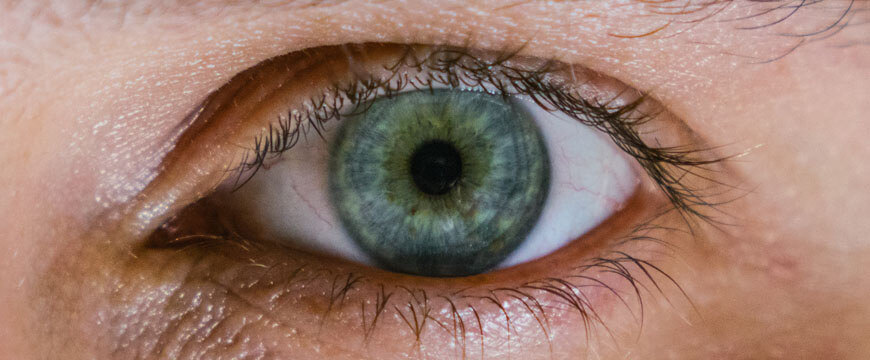 |
| Facial expressions | Looks at what emotion is represented on the confront. |  |
| Foreground / Background | Foreground refers to what is placed at the front of the prototype and background is what is in the back. Commonly, the placement of objects indicate their significance. | 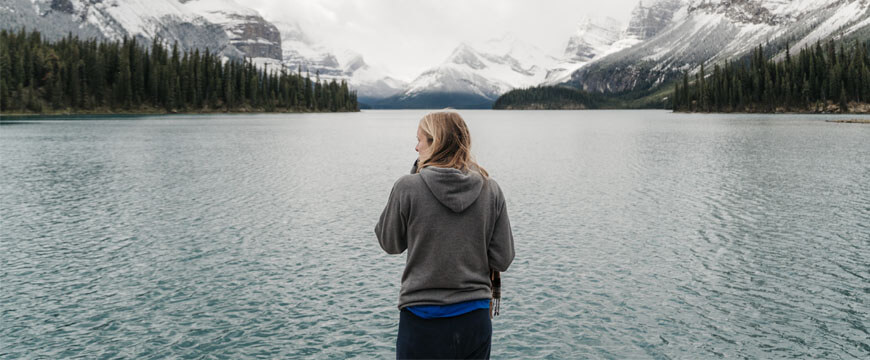 |
| Gaze | The direction that the subject is looking at. This tin can exist directly at the audience, or something within the visual text. | 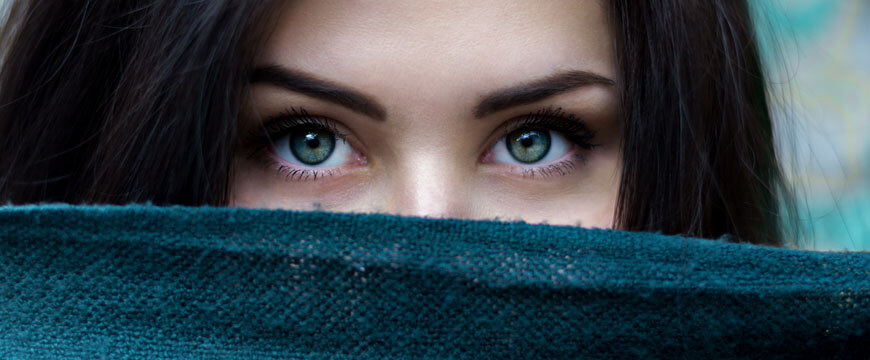 Directly gazes makes the connection between the audience and field of study more intimate. Information technology tin also challenge the audience. |
| Gestures / Trunk language | This refers to the way the body conveys feelings or emotions. | 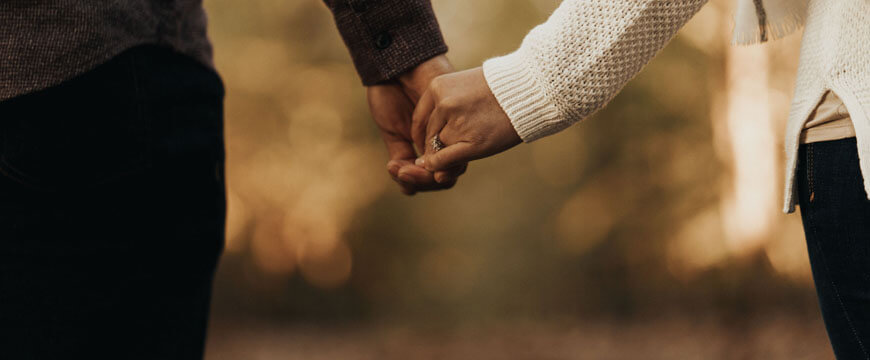 Holding hands indicates closeness or love. |
| High-angle shot | When the camera is placed higher than the field of study, and looks downwardly on them. It usually makes the discipline wait junior. | 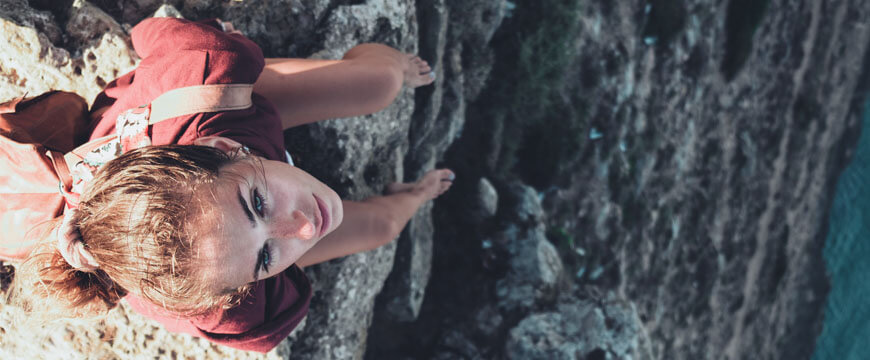 Makes the subject seem smaller and vulnerable. |
| Lighting | Refers to how illuminated the paradigm is. It tin can exist bright lighting, dim lighting or even a filtered lighting. | 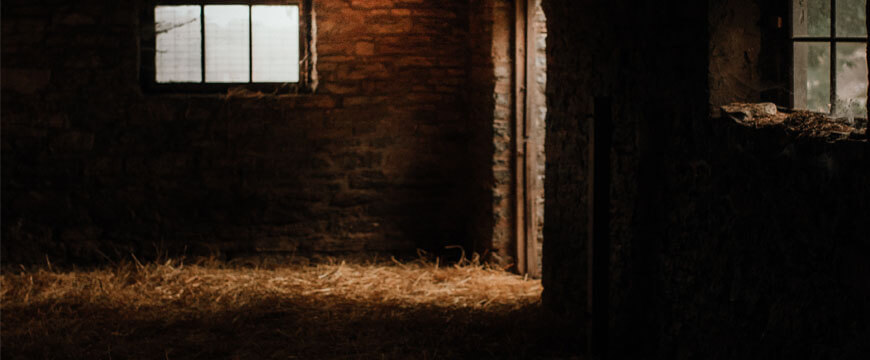 Dim lighting = mysterious or scary |
| Low-angle shot | When the camera is placed below the subject area and looks upward at them. It often makes the bailiwick seem superior. | 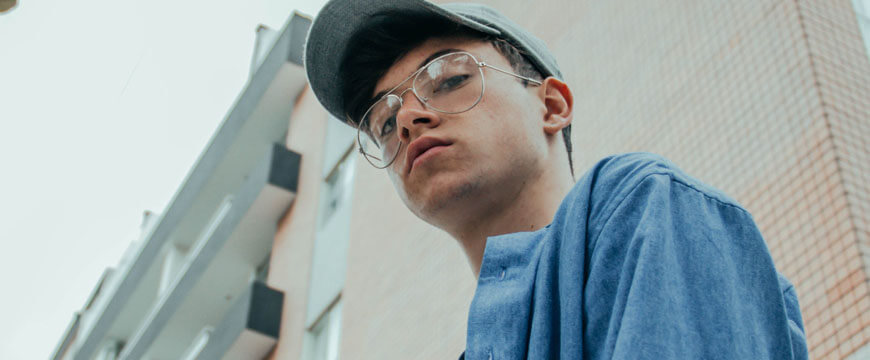 Creates a superior or administrative vibe. |
| Mid-shot | When the camera captures a subject from a medium distance. Usually, for humans, it is from the waist up. | 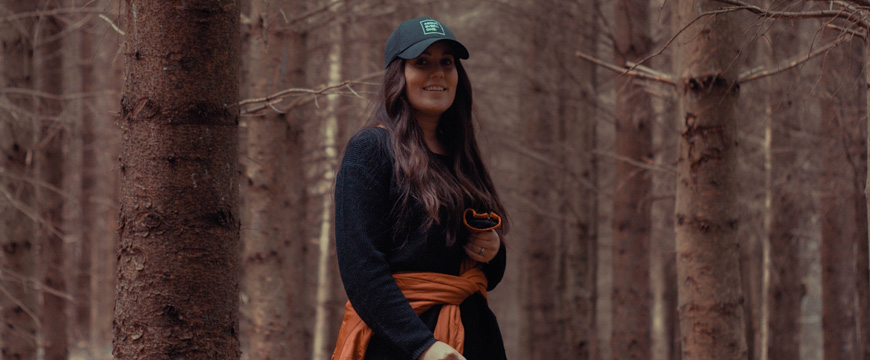 |
| Indicate of view | Viewing the world from a specific grapheme's perspective. | 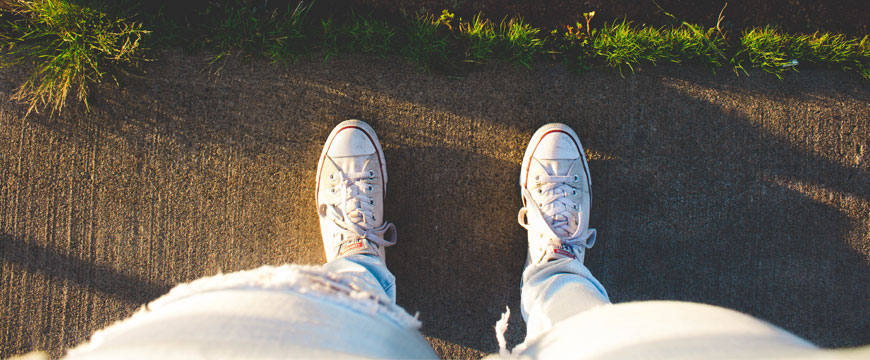 |
| Salient image | The first element that grabs the viewer's eye. Information technology stands out and is unremarkably important in conveying meaning. | 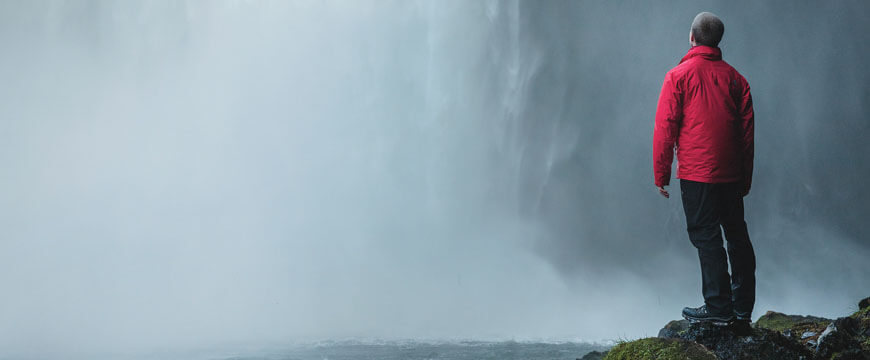 Salient images can be created through colours, infinite, vectors or layout. |
| Size | Can be large or modest. The size of a subject field tin indicate their significance in the visual text, and convey meaning. | 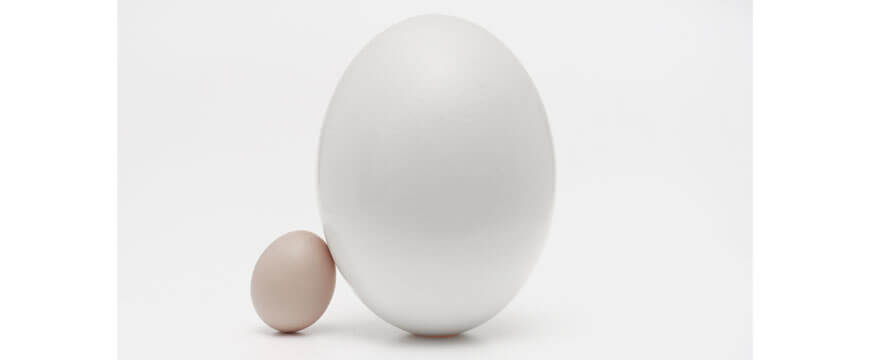 |
| Space | This refers to the empty parts of an prototype. | 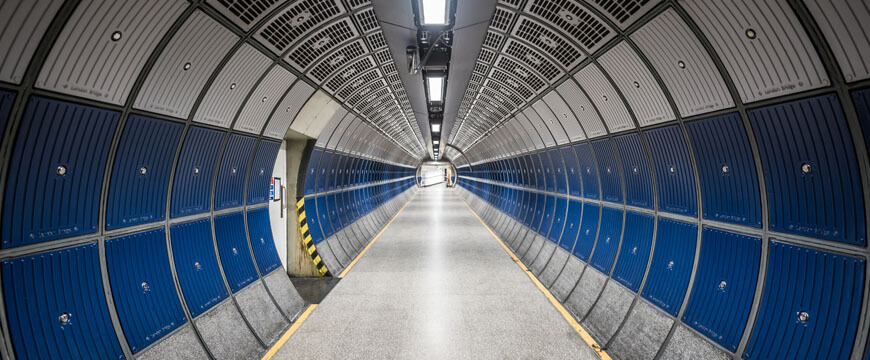 Empty space tin indicate isolation or lonliness. |
| Speech bubbles | They consist of circles, clouds, squares, spikes that include texts. The bubble type often indicate how we read a text. So, it is a way of conveying meaning in graphic novels or comics. | 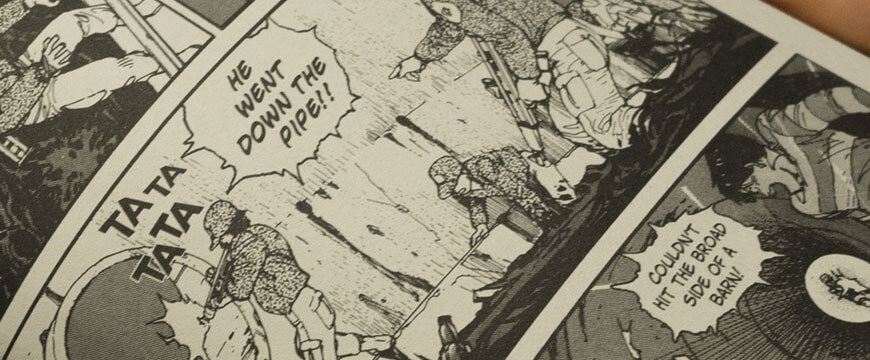 |
| Texture | Does the prototype look rough or shine? Texture can correspond meaning in works. | 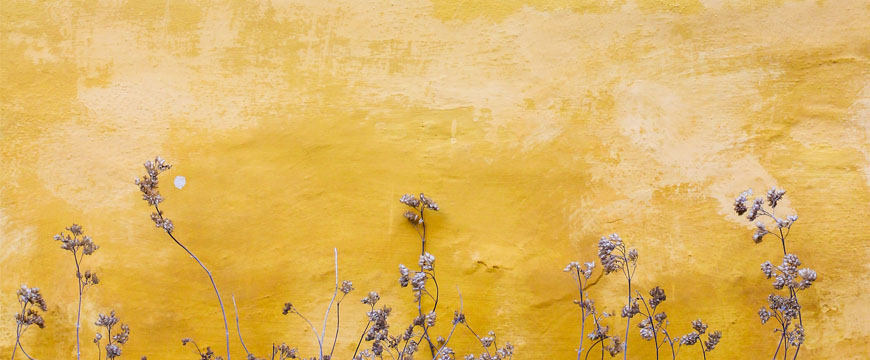 Rough texture tin can requite a rustic or bawdy feel. |
| Vectors | Refer to the lines that direct our reading path in the visual text. They usually travel from salient images and lead our eyes through the rest of the epitome. | 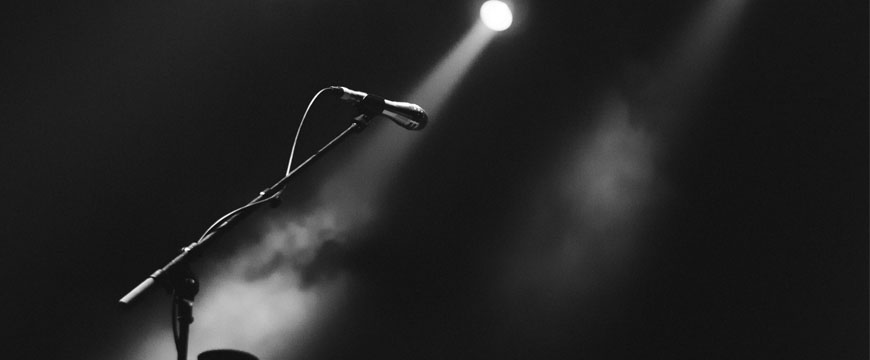 The light beam acts every bit a vector to the microphone. |
Click here to see the total list of VISUAL TECHNIQUES.
How to analyse visual texts step-past-step
Analysing visual texts might seem daunting, merely it really isn't!
We will guide you through these easy steps, using March as an example to analyse visual texts.
Here is a page that we will analyse.
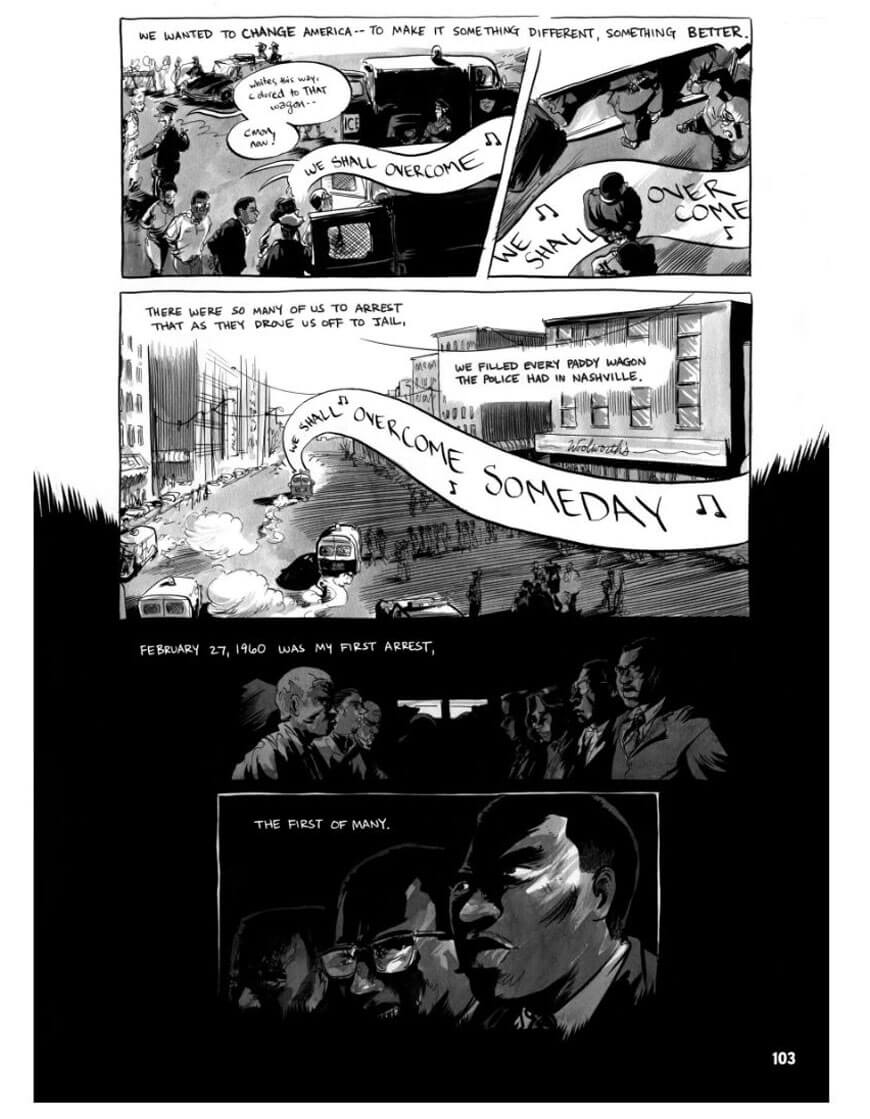
March is an autobiographical, graphic novel virtually the US Civil Rights Motility, told through the perspective of Us Congressman and civil rights leader, John Lewis. He wrote it with the help of Andrew Aydin and Nate Powell.
Step 1: Offset reading – The large movie
Here, yous are trying to get an overall understanding of the text. This means looking at the text and what information technology is presenting.
Accept a skillful await at the visual text. Read whatever text on the image and commendation box.
To exercise this, let's enquire ourselves a few questions:
- Is the visual text part of a series (page in graphic novel, shot from movie…) or is it alone (painting, poster…)?
- What is shown?
- How practise you feel about it?
- Does the text explain the prototype?
- What do you recollect information technology is trying to say?
Matrix students are taught a method to understand and analyse texts. This step helps yous build comprehension.

Let's apply this to March.
- We are looking at ONE Folio of a graphic novel.
- It is showing a truck absorbing black people from town to town.
- It is quite confronting and unnerving.
- The text tells us about the abort from the perspective of Lewis. There are also music tunes indicating that someone is singing or chanting.
- It is showing us about the unfair treatment of black people.
Footstep 2: Second Reading – Identifying techniques
Now that y'all know the general pregnant of the visual text, you need to observe techniques.
This means identifying them and interpreting what it represents.

To do this, yous need to firstly, identify the techniques.
Remember, y'all are looking at visual techniques!
Of course, you can also analyse literary techniques if the image has text, merely your focus should be on VISUAL, not literary.
In this pace, yous are looking for meaning and analysing.
Allow's take a look at what nosotros tin can see in March:
- Slap-up dissimilarity and graphic weight between beginning one-half and second half of the page in terms of lighting
- At that place are harsh spikes that split the page in half
- Dim lighting on the blackness people'due south confront in the 2d half
- A curvy line as voice communication bubbling, with music notes indicating that someone is singing or chanting "Nosotros shall overcome". This line is besides repeated three times.
- Close up on vehement facial expression in last panel
You would desire to accept note of these features to assist you lot in your shut analysis.

Pace three: Third Reading – Deep analysis
This is when you figure out the significance of the technique and link it to the purpose of the text.
To practise this, you need to know the general purpose of techniques and link it to the field of study and context of the visual technique.
In other terms, discover what the technique means and how it relates to the composer's purpose.
Let'southward have a look at March:
- The graphic weight and contrast of lite and dark between the first one-half and the second one-half of the folio symbolises the stark differences between black and white people in society.
- The dim lighting and heavy shadows on the black men represents the hardships they endure and gild's negative view of them.
- The man's fierce facial expression indicates that he is determined to correct the wrongs his people has suffered.
- The repetition of "we shall overcome" in wavy speech bubbles with music notes shows us that the black people are chanting. This highlights their determination to overcome the wrongs in club.
Considering all of this, we can conclude that society is racist towards people of colour. Lewis is non only confronting us of this truth, but he is as well compelling the states to actively fight for equal rights like the black people are doing.
© Matrix Education and www.matrix.edu.au, 2022. Unauthorised use and/or duplication of this material without limited and written permission from this site's author and/or possessor is strictly prohibited. Excerpts and links may be used, provided that full and clear credit is given to Matrix Education and www.matrix.edu.au with appropriate and specific management to the original content.
Source: https://www.matrix.edu.au/beginners-guide-year-9-english/part-7-how-analyse-images-visual-information/
Post a Comment for "How Does a Comparative Study Look Like for Ib Visual Arts"